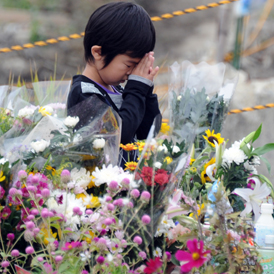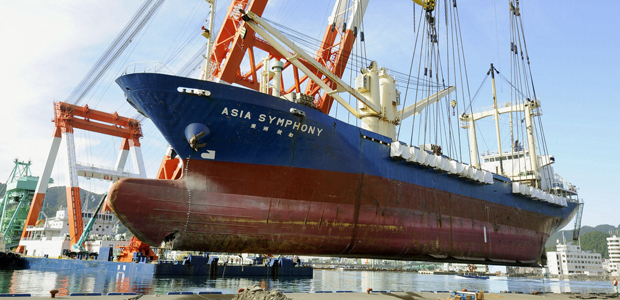Tears, smiles and joy amid shattered lives
How have people coped losing their families, friends and homes to the Japanese tsunami? World Vision worker Mitsuko Sobata writes for Channel 4 News about the reality of the tsunami’s aftermath.

Looking back I have seen many achievements, challenges, improvements, tears, smiles and joy whenever I have visited the affected areas.
What inspires me most are the children and people who are carry on their “normal” daily lives in these affected areas.
World Vision has been running a “child-friendly space” for elementary schoolchildren affected in Minamisanriku. The children lost their school building when the tsunami hit.
Some of these children lost their homes, school, family and friends and are living in the temporary shelters now. Many teachers are also affected.
However, whenever I visit this child-friendly space, I see many children laughing, playing and studying with their friends like children do all over the world and teachers running the school as they used to do before the tsunami.
Kesennuma City, Miyagi Prefecture, was also devastated. After the tsunami, 90 per cent of the facilities related to the fishing industry in Kesennuma were destroyed or damaged.
There is still rubble and collapsed buildings near the main port and much is covered by seawater because the ground is sinking.
However, the fishing people in Kesennuma City reopened part of the port in June. It is still running at only 20 per cent of the capacity before the tsunami but they are still able to ship many fish out across the country.
Read more: Minaminsanriku - Japan's tsunami-hit ground zero

When I visited the temporary shelters in Miyako City, Iwate Prefecture, where World Vision is supporting communities, I met many people with caring hearts.
The people in the shelters had lost their homes, their belongings, their livelihoods, and often their friends and family because of the tsunami.
Also, I met many people from the government, companies, volunteers, and organisations who are working for the children and people in the affected areas.
Five days after the tsunami hit, I visited one junior high school in Minamisanriku where many people were evacuated. There were so many people all looking so tired, sleeping on cardboard, with nothing but the clothes they were wearing.
Everyone has moved on to restart their new lives.
On the walls, there was note after note from people who had lost their families.
I visited the same place again this August. There was no one and no notes.
It was the school like I used to attend when I was a child. Everyone has moved on to restart their new lives.
It seems that after every disaster, aid organisations and the media talk at length about the amazing resilience of people who can recover despite tremendous loss and hardship – but it’s different to see and experience it for yourself.
Of course, there are many challenges and difficulties on the way to reconstruction. However, I trust in our resilience.
